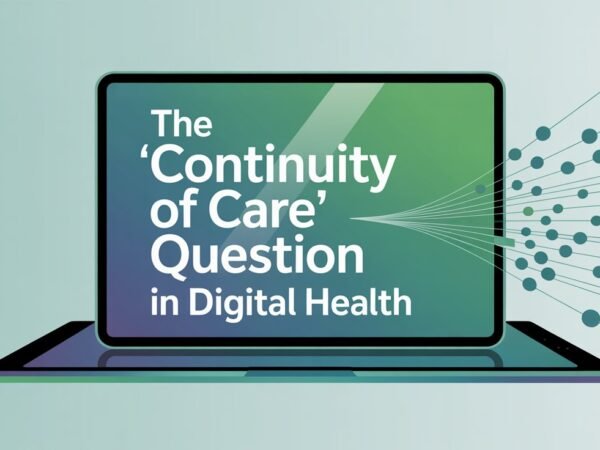Introduction: Therapy That Fits Modern Lives
For decades, therapy in India was considered a last resort — a hidden act, a taboo. But things have changed. Conversations around anxiety, depression, burnout, and trauma have moved from whispers to headlines. Still, access remains a problem for millions.
Enter the era of therapy sessions online—a format that directly brings licensed mental health support into your living room. There is no travel, no waiting rooms, and no stigma. Just help on your terms.
This digital transition is more than just convenience — it’s a cultural, economic, and emotional breakthrough for a country grappling with rising mental health needs. In this guide, we’ll explore why virtual therapy is booming, how to find the right therapist online consultation, and what data tells us about its long-term effectiveness.
India’s Mental Health Crisis: The Hidden Epidemic
While awareness grows, the gap between need and access remains dangerously broad.
Verified 2023–2024 Statistics:
- As per the National Centre for Mental Health Research & Training (NCMHRT, 2024), 23% of Indian adults suffer from mild to severe psychological distress.
- The India Wellness Insights Survey (2023) found that 70% of individuals in Tier-2 and Tier-3 cities cannot access a licensed therapist within 20 km.
- The 2024 WHO Country Mental Health Profile notes that only 1.1% of India’s health budget is allocated to mental health, compared to the global average of 5%.
These gaps, especially outside metro areas, make traditional in-person therapy inaccessible to the majority.
Therapy Goes Digital: A Paradigm Shift
The growth of online therapy in India is not just a COVID-era phenomenon. It’s a structural shift accelerated by tech, urban lifestyles, and changing attitudes.
According to a 2023 report by Redseer Strategy Consultants:
- Over 12 million Indians have used online therapy platforms at least once — a 230% increase from 2020.
- 56% of users said they preferred therapy online over physical sessions due to privacy and convenience.
- 74% of new users in 2023 were first-time therapy seekers, highlighting how digital formats reduce stigma.
For the first time, mental health care is not reactive—it’s accessible, proactive, and digitally democratized.
Benefits of Therapy Sessions Online
Let’s explore why virtual therapy has become the preferred mental wellness channel for students, professionals, homemakers, and even senior citizens:
- Geographic Freedom Users from remote or underserved areas can now access therapists nationwide — instantly.
- Lower Costs On average, online therapy is 40–60% cheaper than in-person sessions due to reduced overheads.
- Privacy & Discretion No clinic visits mean zero judgment. Users can engage in a safe, private environment — essential for first-timers.
- Flexible Scheduling Sessions can happen after work, during a lunch break, or even on weekends — no time off required.
- Choice of Format Platforms offer chat, audio, or video options, giving users more control over their engagement.
- Quick Therapist Matching Using symptom-based intake forms and preference filters, platforms often connect users to the right therapist online consultation within 24 hours.
How Online Therapy Works: The User Journey
Here’s what typically happens when someone books a therapy session online for the first time:
Initial Intake Form
Users answer a brief questionnaire detailing emotional concerns, preferred language, session mode, and therapist gender.
Therapist Matching
AI-assisted or human-reviewed matches suggest the most suitable therapist.
Session Booking
Users pick a time slot and format (chat/audio/video). Many platforms allow booking within 48 hours.
First Session
Usually 45–60 minutes. Focuses on rapport building, issue mapping, and emotional safety.
Session Continuity
Users can continue with the same therapist or request a switch at no extra cost.
Ongoing Care
Based on user preference — weekly, biweekly, or ad-hoc sessions are offered.
Cost Breakdown: Online vs. Offline Therapy (India, 2024)
According to the MindCare Market Outlook Report (Q1 2024):
| Therapy Type | In-Person Average Cost | Online Therapy Cost |
|---|---|---|
| Individual Session | ₹1,800 – ₹3,200 | ₹600 – ₹1,200 |
| Couples Counseling | ₹2,500 – ₹4,000 | ₹900 – ₹1,800 |
| Career or Stress Coaching | ₹2,200 | ₹800 |
| Subscription (4 sessions/month) | Not Available | ₹2,400 – ₹3,200 |
Online platforms offer session bundles, first-time discounts, and EMI options, making therapy sustainable — not just a one-time event.
Therapist Online Consultation: What to Look For
Whether you’re dealing with burnout, relationship stress, trauma, or just need clarity, choosing the right therapist is crucial. Here’s a checklist:
| Criteria | What to Ensure |
| Credentials | Therapist should be RCI-registered or hold a Master’s in Clinical Psychology |
| Experience | At least 2–3 years in practice; specialization in your concern |
| Language Compatibility | Must speak your preferred language fluently |
| Therapy Style | Cognitive Behavioral, Mindfulness-based, Trauma-Informed, etc. |
| Flexibility | Availability outside working hours, weekend options |
| Platform Support | Offers secure video calls, easy rescheduling, therapist switching |
A good therapist online consultation experience should feel like a supportive, safe dialogue — not a rushed appointment.
Common Concerns: Debunking Myths About Online Therapy
| Concern | Reality |
| “It’s not as effective as in-person” | Studies show equal or better results for anxiety, depression, and stress |
| “Therapists may not be real” | Verified platforms list only certified and background-checked professionals |
| “It’s too impersonal” | Video + chat options allow strong rapport-building |
| “It won’t be private” | Sessions are encrypted, with confidentiality policies as strict as clinics |
Latest Trends: What the Future Holds
India’s online therapy space is quickly evolving. According to the India Behavioral Health Trend Survey (2024), future innovations include:
- Emotion AI screening: Smart intake forms that analyze tone and keywords to detect risk levels
- Regional Language Expansion: Demand for therapy in Bengali, Tamil, Marathi, and Urdu is rising by 28% YoY
- Voice-first interfaces: Therapy booking and follow-ups via Alexa, Google Assistant
- Peer-support integration: Community-based chat rooms moderated by licensed professionals
- Preventive check-ins: Weekly mood surveys and coping skill reminders via the app
These upgrades will make therapy sessions online even more intuitive, accessible, and user-centric.
Real User Experiences
“I live in Siliguri, and we don’t have a clinical psychologist nearby. With online sessions, I could finally talk to someone who understood me.” — Priya S., West Bengal
“I wasn’t sure if I’d feel comfortable on a screen. But honestly, it felt easier to open up. I didn’t have to see anyone or explain myself to my family.” — Ravi K., Mumbai
“The best part? No travel. I book my sessions on Saturday mornings, right after breakfast. I finally feel in control of my emotions again.” — Nikita J., Pune
Conclusion: Therapy That Meets You Where You Are
Therapy is no longer confined to a psychologist’s office. It’s in your bedroom, on your mobile, during your lunch break — wherever you feel most comfortable. In a country where access and affordability have been major blockers, the shift to therapy session online formats has opened the floodgates for millions to get the help they deserve. And with qualified professionals offering therapists online consultation, you no longer have to wait, travel, or justify your healing decision. Because mental health doesn’t need a perfect moment — it just needs your first one.
Do Read: White Label Telemedicine: A Guide to Launching Your Telehealth Platform













